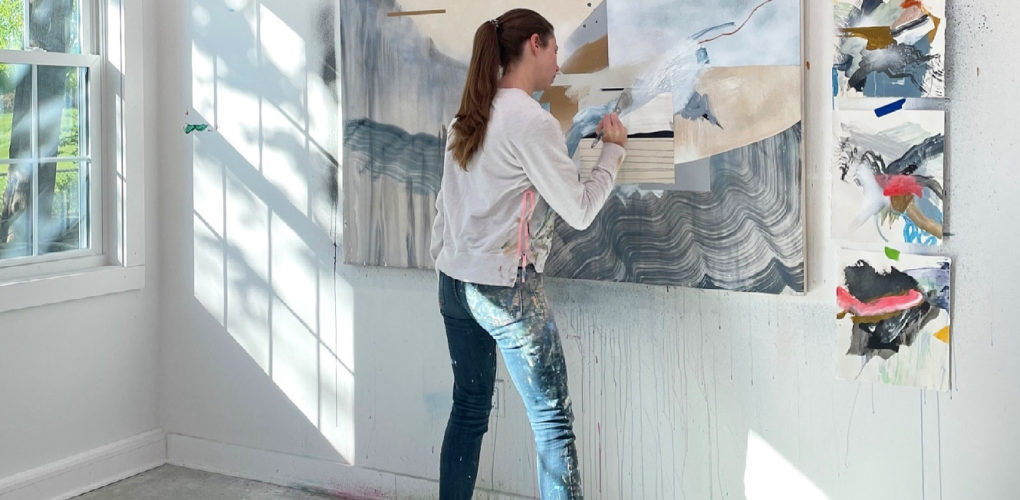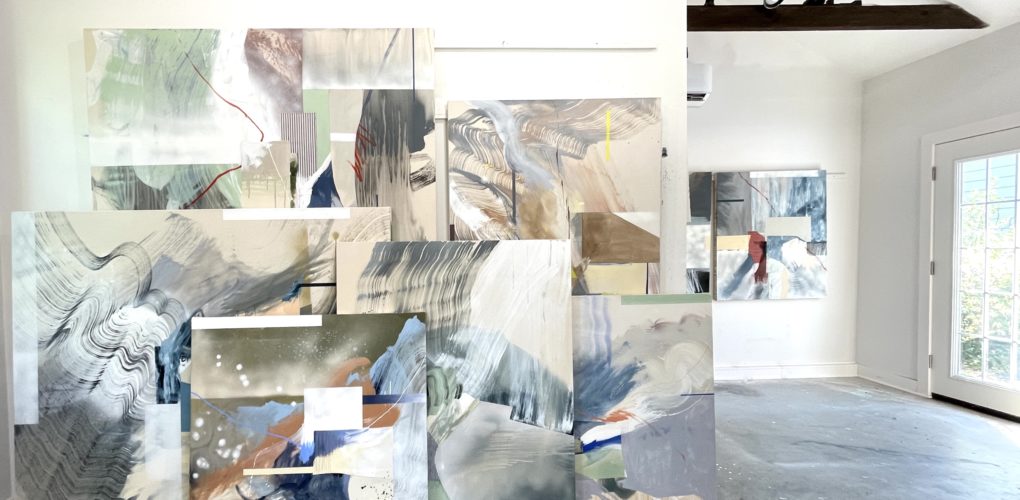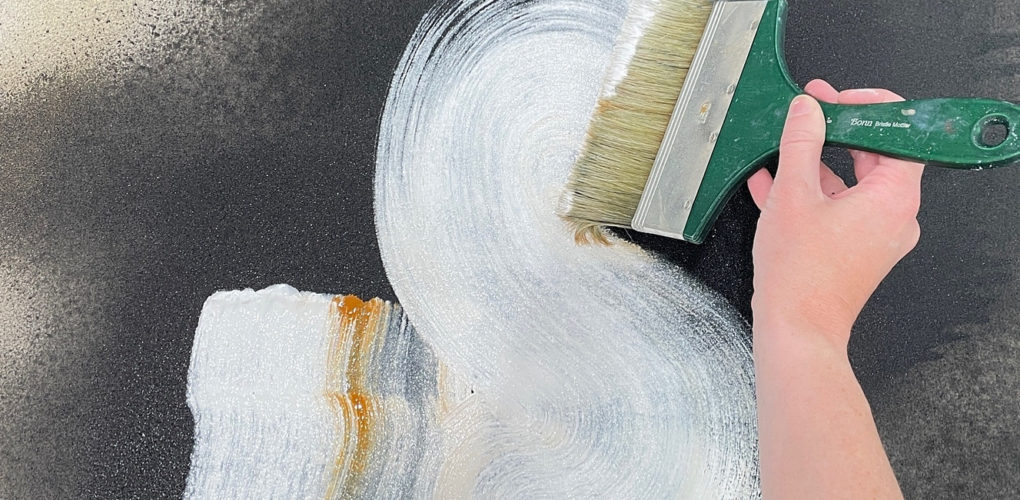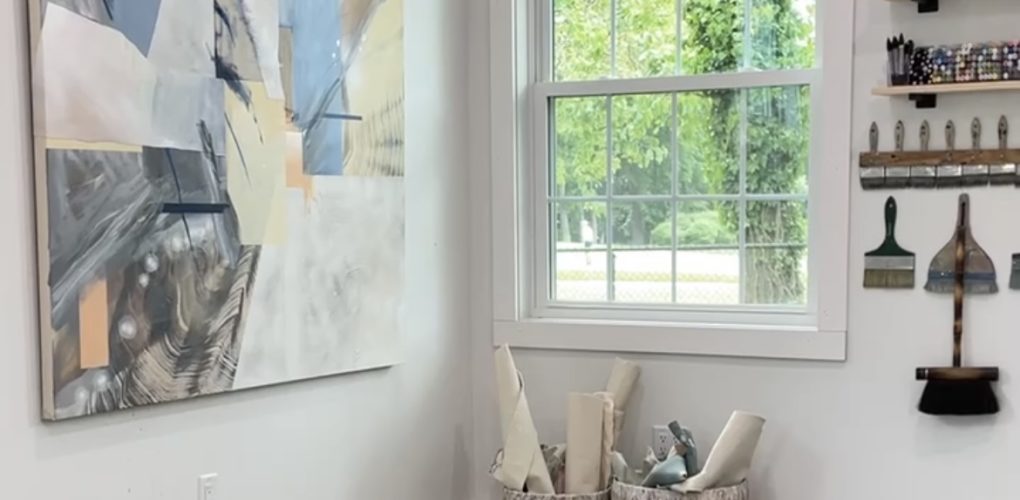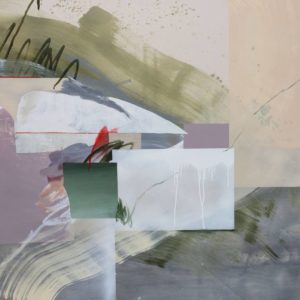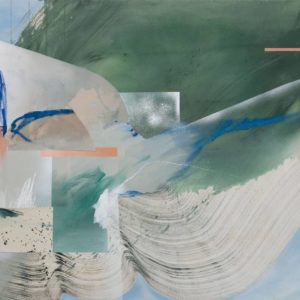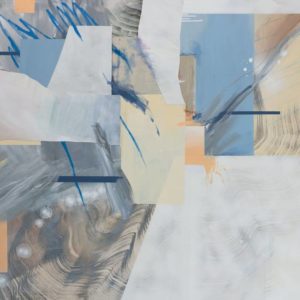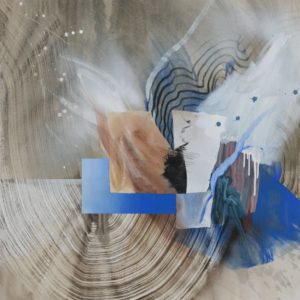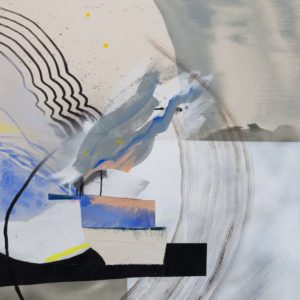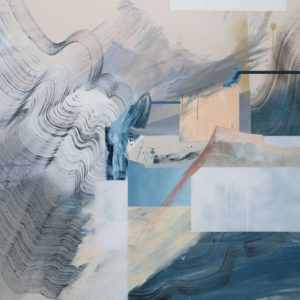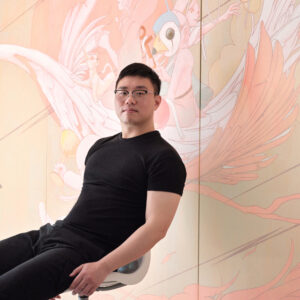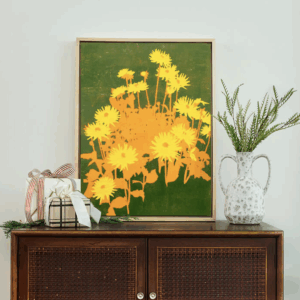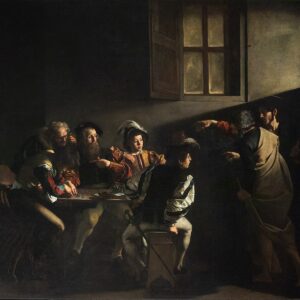Art We Love
 First Look: Away In by Rebecca Stern
First Look: Away In by Rebecca Stern
Created amidst the tumult of COVID-19, the paintings in Rebecca Stern’s latest series, Away In, express moments of both tension and quietude. Reflecting on her own conflicting emotions during this time, Rebecca uses her painting practice to contemplate our mind’s ability to hold two seemingly opposing thoughts at once. Through the juxtaposition of hard-edge shapes and free-flowing brushstrokes, Rebecca deftly conveys this dialectical phenomenon.
Culminating in thoughtful compositions she describes as mental landscapes, these mixed-media works proffer a sense of peace, serving as analogues for the emotional process of accepting contradictory feelings and uncertain circumstances.
Rebecca Stern holds a BFA with honors from Lesley University of College of Art and Design in Cambridge, Massachusetts. She has exhibited her work prolifically throughout the United States, including at Site Brooklyn in New York; the Stamford Museum in Connecticut; and the Sarah Doyle Gallery at Brown University in Providence, Rhode Island.
Tell us a bit about who you are, and your background as an artist.
I’m originally from Berkeley, California, and was homeschooled until I started college early. I went to art school in Boston and worked as an art teacher for 10 years before leaving teaching to work as an artist full time. My work has always been autobiographical, but has taken on many forms. I was originally a photographer, which morphed into performance and installation work, [then] printmaking, and now I have found my home as a painter!
What inspired this series?
This series was inspired by moments I have experienced over the past year in which I have felt simultaneously two polar opposite emotions. I became interested in how my brain processes this, and these pieces began to serve as a methodical sorting of my thoughts.
How did you go about representing this notion—the duality of emotions—visually?
I’m really interested in the juxtaposition of gestural mark making and hard-edged shapes: how when these elements are placed next to each other there’s a sense of tension, and a conversation begins to happen. Gestural marks seem to flow across the canvas much like the peaceful movement of our minds. This “mind current” suddenly gets interrupted by an opposing thought thrown in like a block, illustrated through more geometric elements like hard-edged painted shapes or collaged pieces of canvas.
You have described your works as mental landscapes. What does this mean to you?
My work is very autobiographical, but I don’t view my experience as unique. I see these pieces as a way to explore all of the “visible” features of my mind in a particular time and place. Each painting is documenting a specific thought, feeling, experience or moment: my mental landscape.
Can you walk us through the creation of a work from beginning to end?
I start each work with a pour of fluid paint, which I often manipulate using gravity and various painting mediums. From there I begin building, layer upon layer. I use my large, handmade brushes to create sweeping gestural marks across the piece, followed by a taped off hard-edged shape filled with spray paint. I rifle through my scraps of old canvases to find just the right one, run it through my sewing machine, and tape it in place. I stand back and think before adhering it to the canvas, working from larger marks to smaller details, striving for a perfect sense of balance and movement.
What challenges or surprises came with this series?
I became really attached to each piece as I was working on it! Usually once a painting is done I’m able to set it aside and move on. However, with this series not one painting was done before another. Instead, I kept rotating back through the pieces, adding to each one until I found that they collectively felt complete. It was a shift in my practice and a welcome one! I enjoyed being able to let one inform the other as I worked on the 16 pieces in tandem.
What do you hope viewers take away from these works?
I hope my work serves as a mirror for people to deepen their understanding of themselves. I use the titles of my work to give viewers a clue or a way in to thinking about the work, but other than that I like to leave it open to interpretation.
What’s next for you?
I have a couple of large commissions coming up that will take up a lot of my focus, as well as beginning a new body of work!
